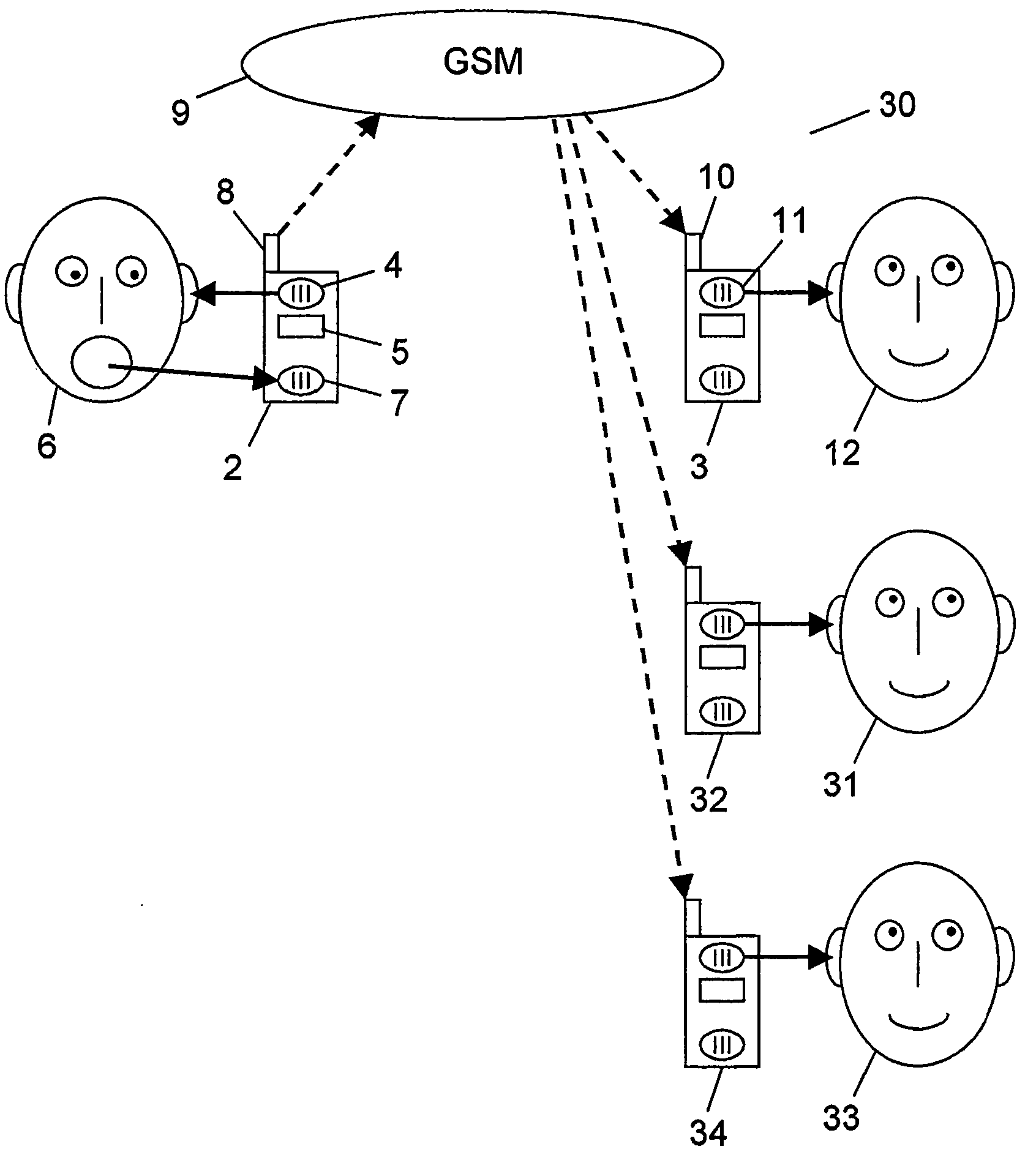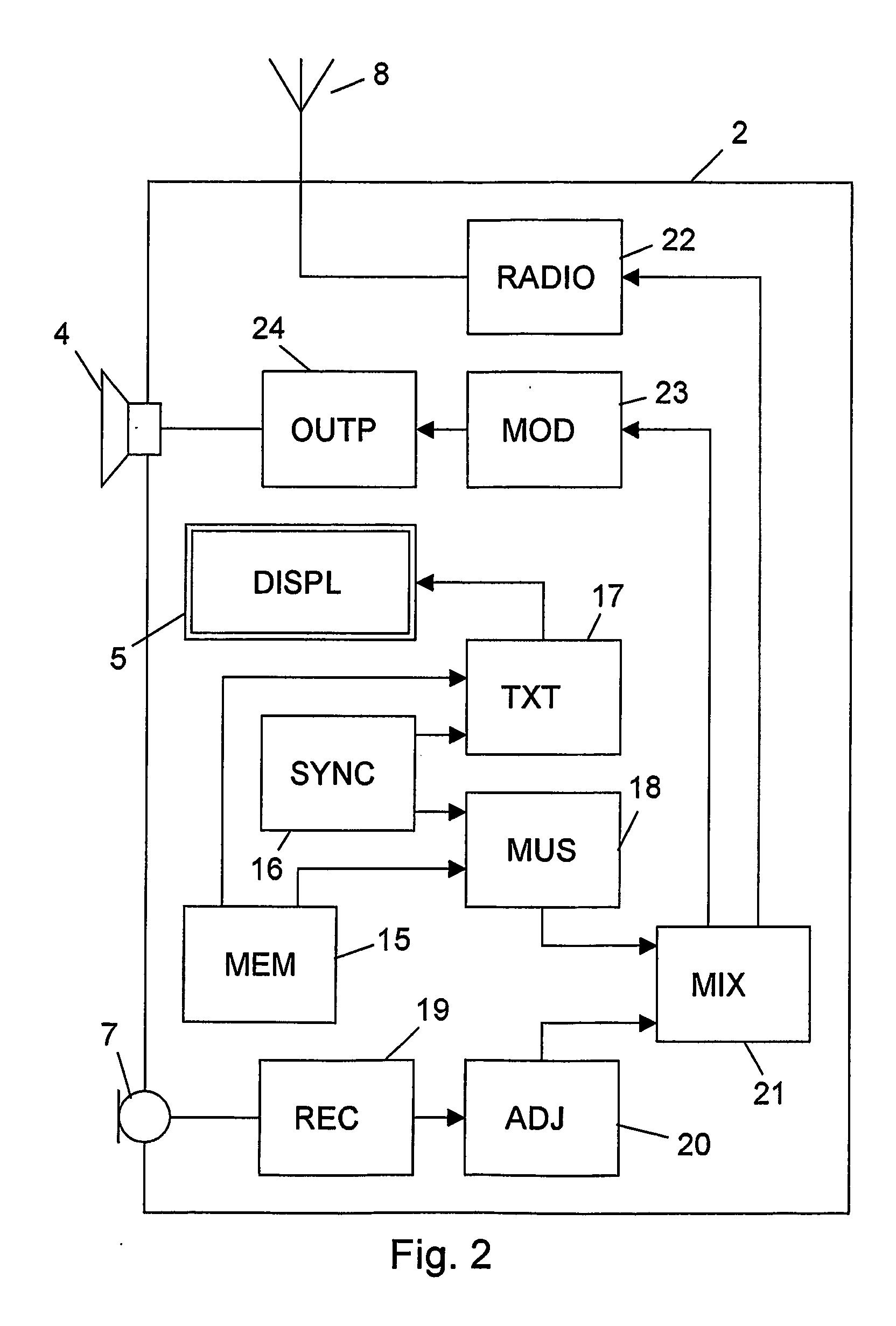Electronic communications device with a karaoke function
- Summary
- Abstract
- Description
- Claims
- Application Information
AI Technical Summary
Benefits of technology
Problems solved by technology
Method used
Image
Examples
Embodiment Construction
[0041]FIG. 1 shows an example of the use of the invention. In the example a karaoke system 1 is implemented by means of two karaoke devices in the form of the mobile telephones 2 and 3. The mobile telephone 2 is equipped according to the invention, while the telephone 3 may be either a standard mobile telephone or a mobile telephone equipped according to the invention. In FIG. 1 the mobile telephones are illustrated as phones connected to a GSM network, but other types, such as UMTS, GPRS or DECT phones, can be used as well. Also normal stationary telephones may be used. As will be mentioned later, also other types of electronic communications devices may be used.
[0042] As will be described in more detail below, the mobile telephone 2 can reproduce the music of a song through the loudspeaker 4 and show the corresponding text of the song on the display 5. A singer 6 listens to the music from the loudspeaker 4 and reads the text on the display 5, which enables him to sing the song in...
PUM
 Login to View More
Login to View More Abstract
Description
Claims
Application Information
 Login to View More
Login to View More - R&D
- Intellectual Property
- Life Sciences
- Materials
- Tech Scout
- Unparalleled Data Quality
- Higher Quality Content
- 60% Fewer Hallucinations
Browse by: Latest US Patents, China's latest patents, Technical Efficacy Thesaurus, Application Domain, Technology Topic, Popular Technical Reports.
© 2025 PatSnap. All rights reserved.Legal|Privacy policy|Modern Slavery Act Transparency Statement|Sitemap|About US| Contact US: help@patsnap.com



